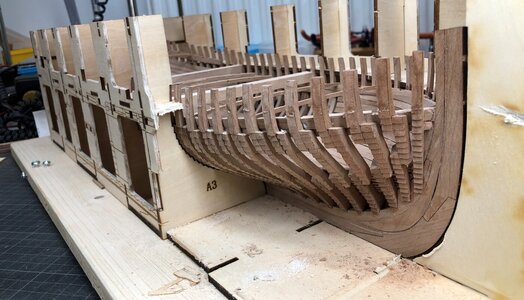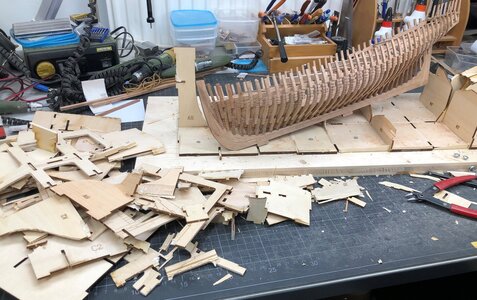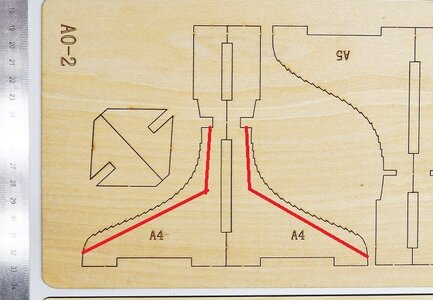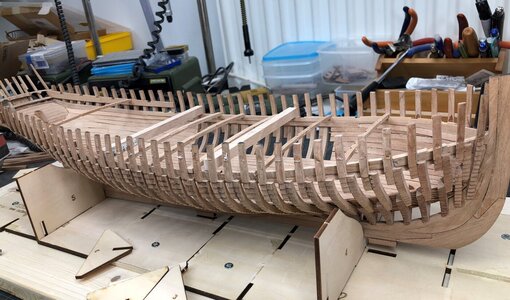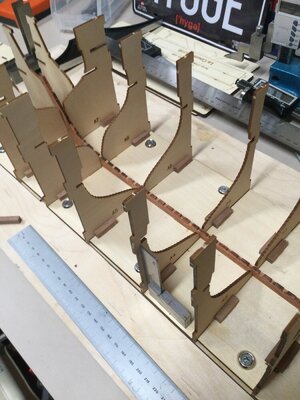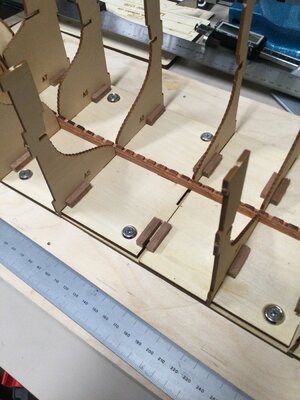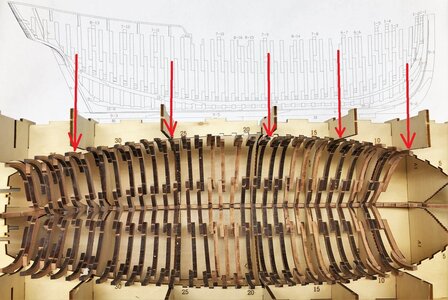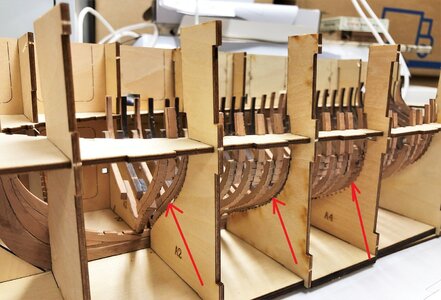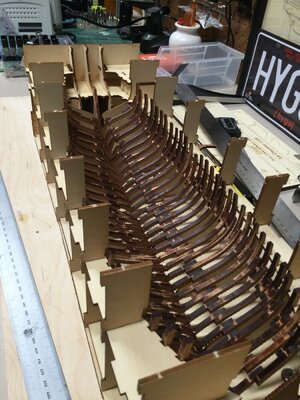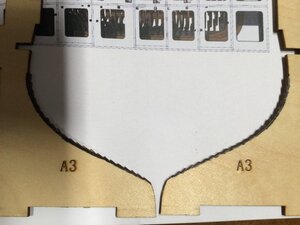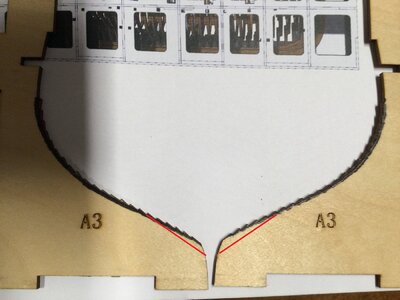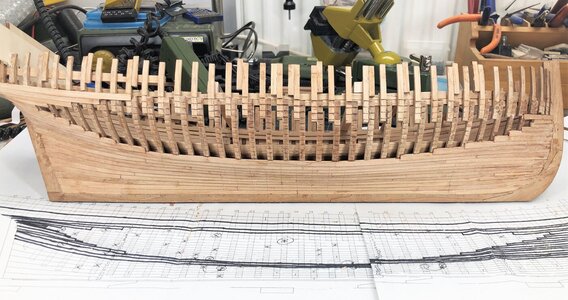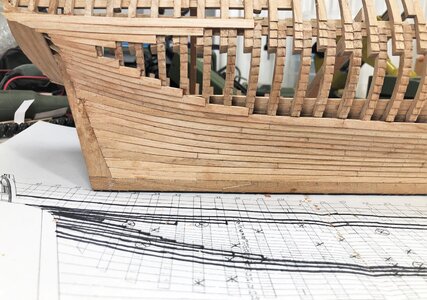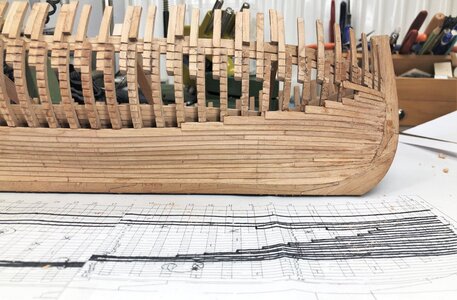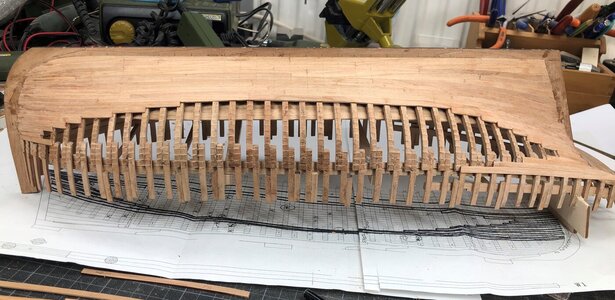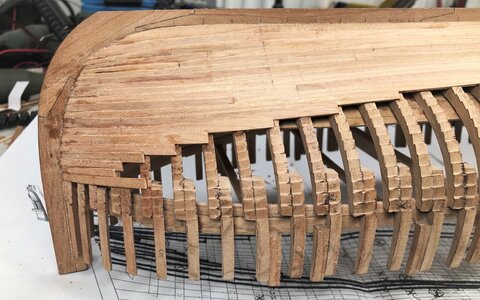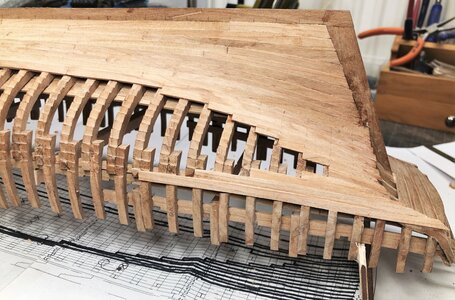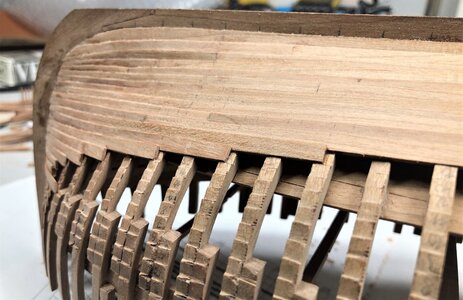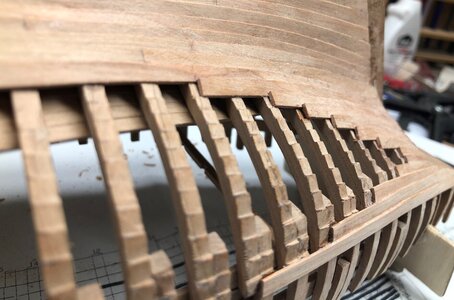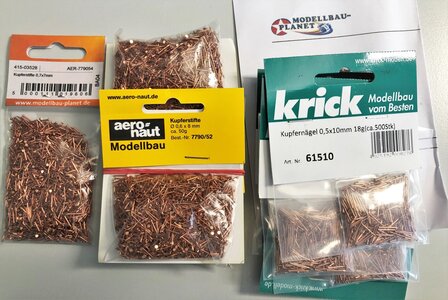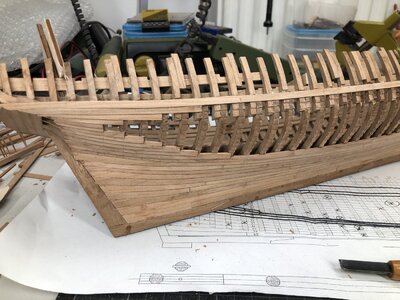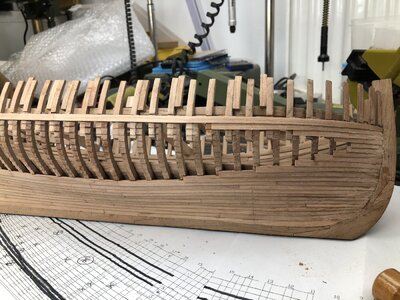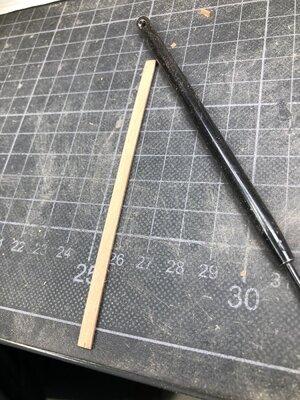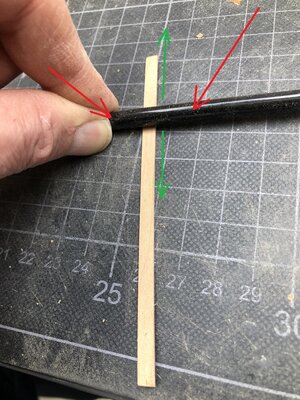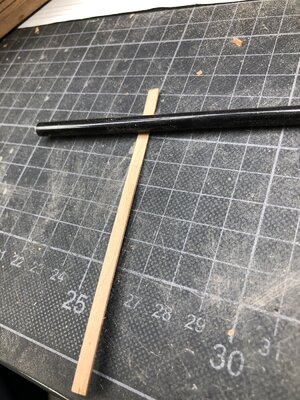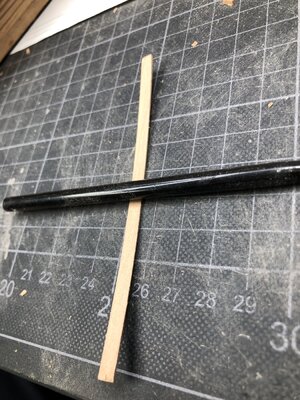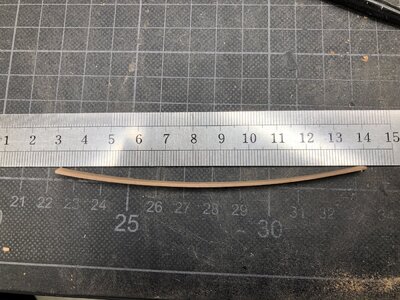You recognized these mistakes correctly -as I amnetioned before, it was only a fast try if it is in general working.I don't know if is distortion of the picture but to me it looks like at least 1 maybe 2 lines for the middle futtock is slightly off:
View attachment 210468
Unfortunately I do not have any really good ideas for alternative ways. Maybe for midships frames you could use a wider or more solid strip of paper and also make it 4 mm wider along the middle futtock?
and I realized, that in principle it is working
correct, or also likeI am using a strip of paper to trace lines as I go. Running it over shorter distances greatly minimizes distortion, as the curve of the planks makes the paper twist.
it will be possibleMaybe scotch tape - it's transparent. Looking great. I haven't seen hull so difficult to plank. You've done excellent job.
The first try I have to remove the pencil lines (obliterate is correct term, or?) and have to make it much more accurate
I have a small laser and will try it also with a "hanging" hull - this will be my weekend trial




